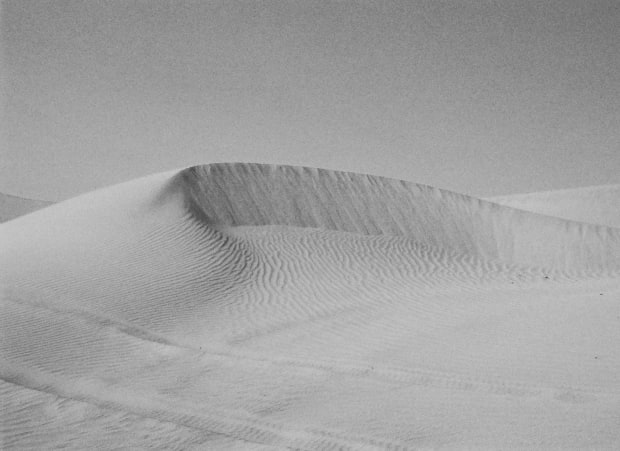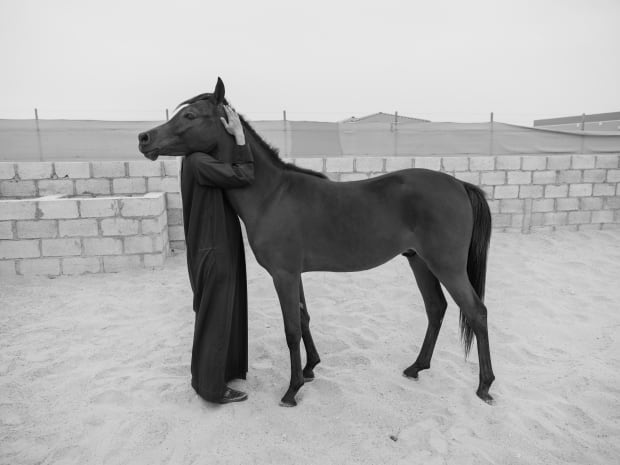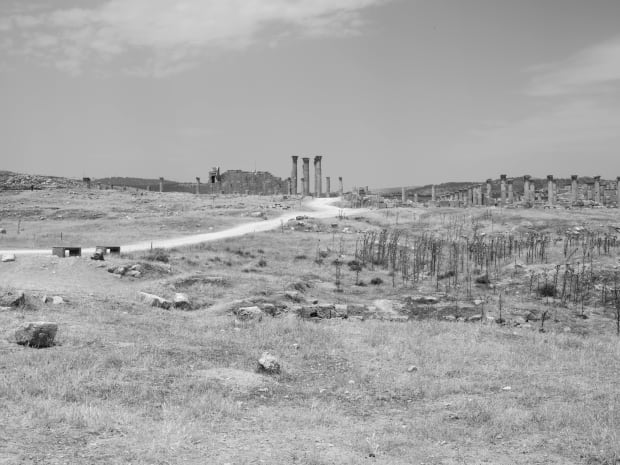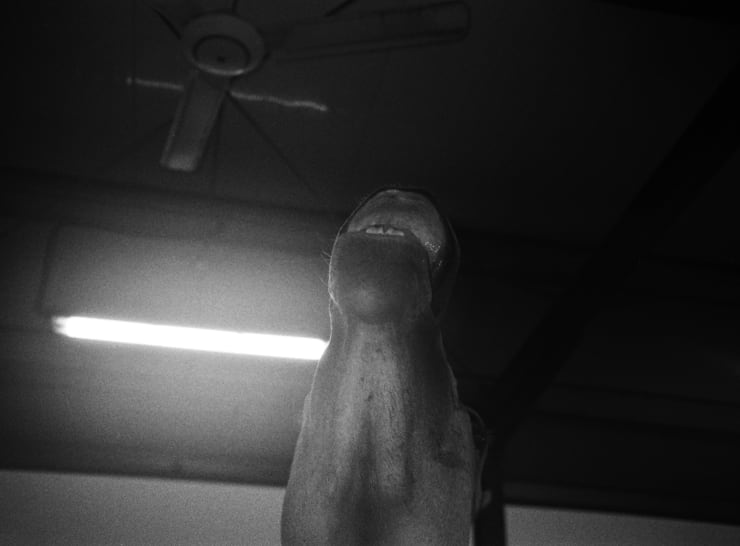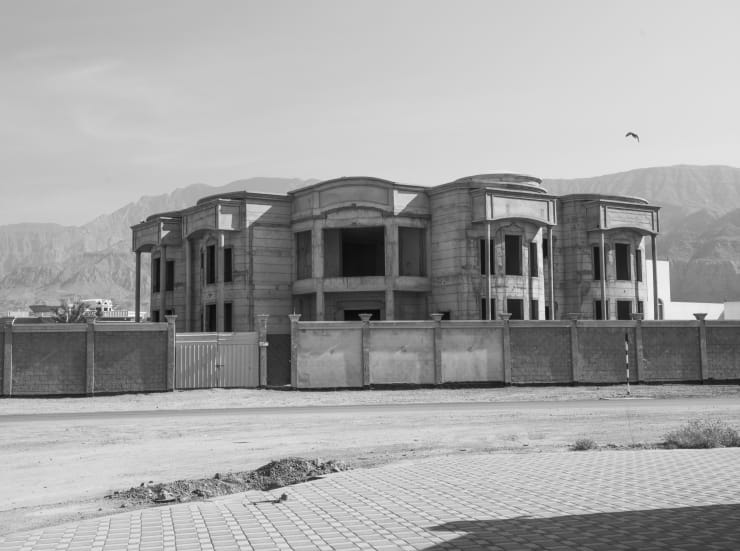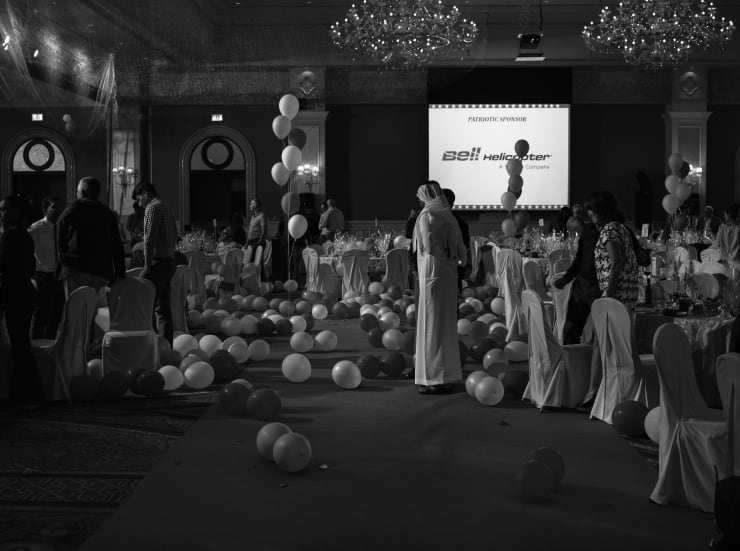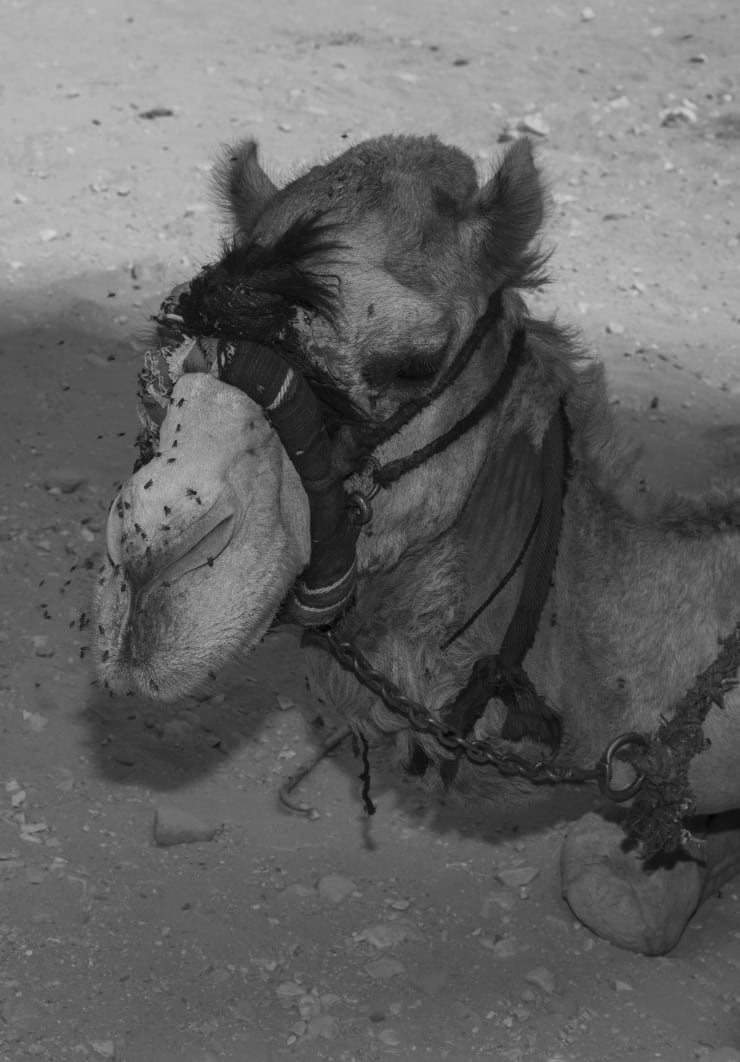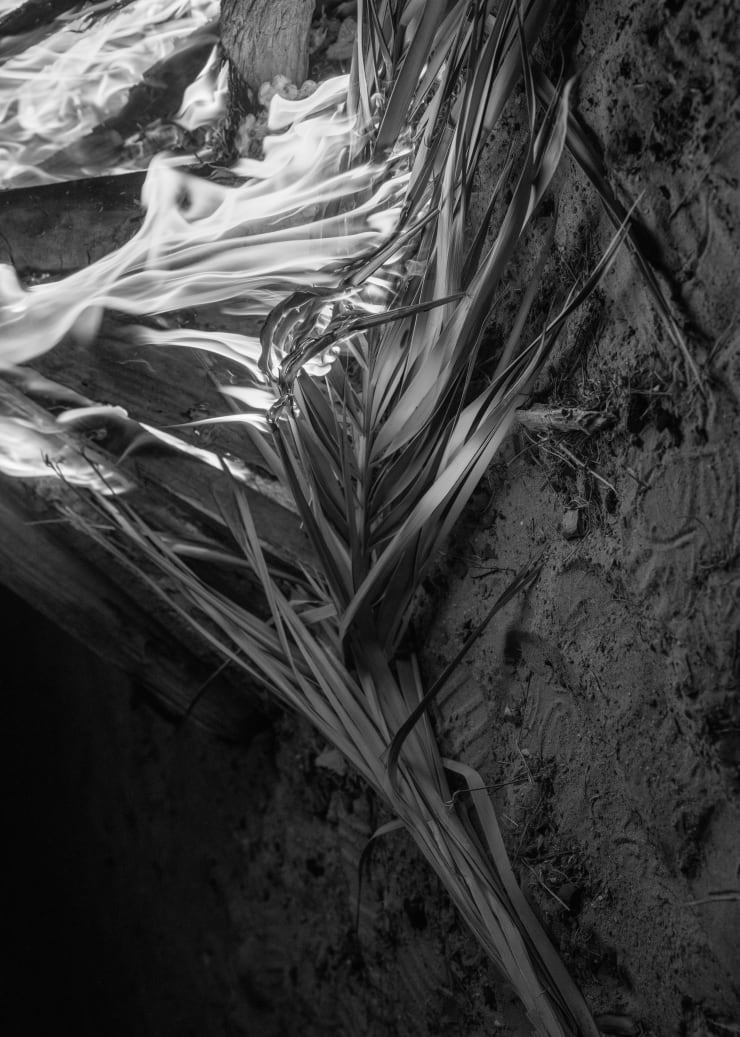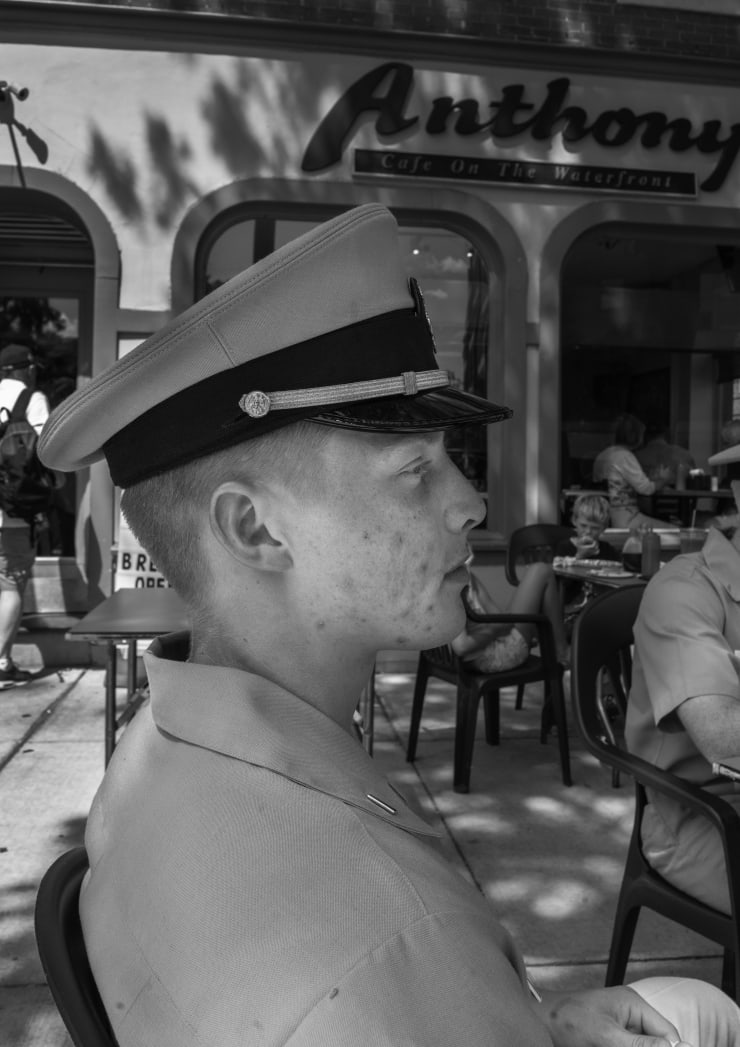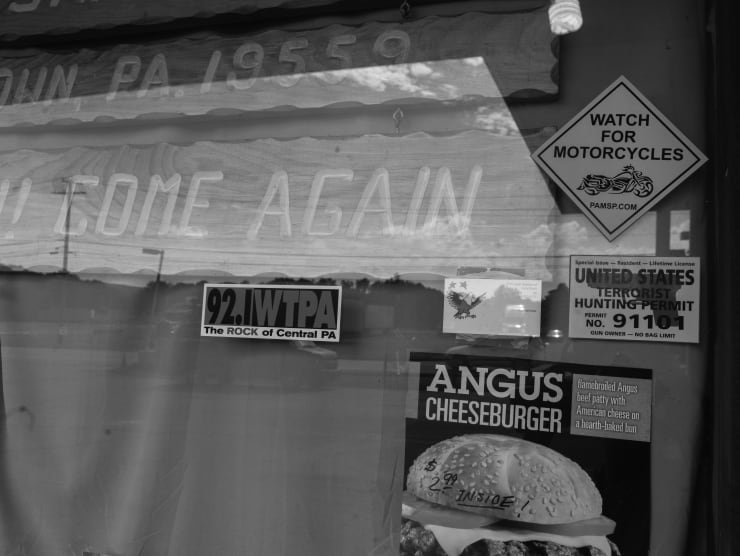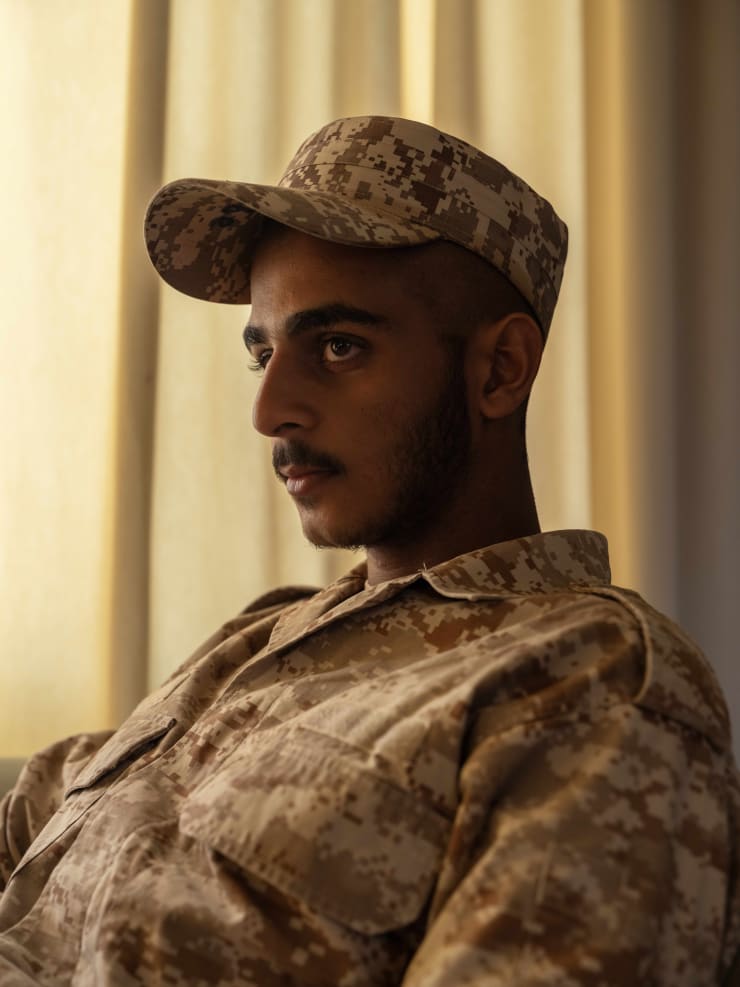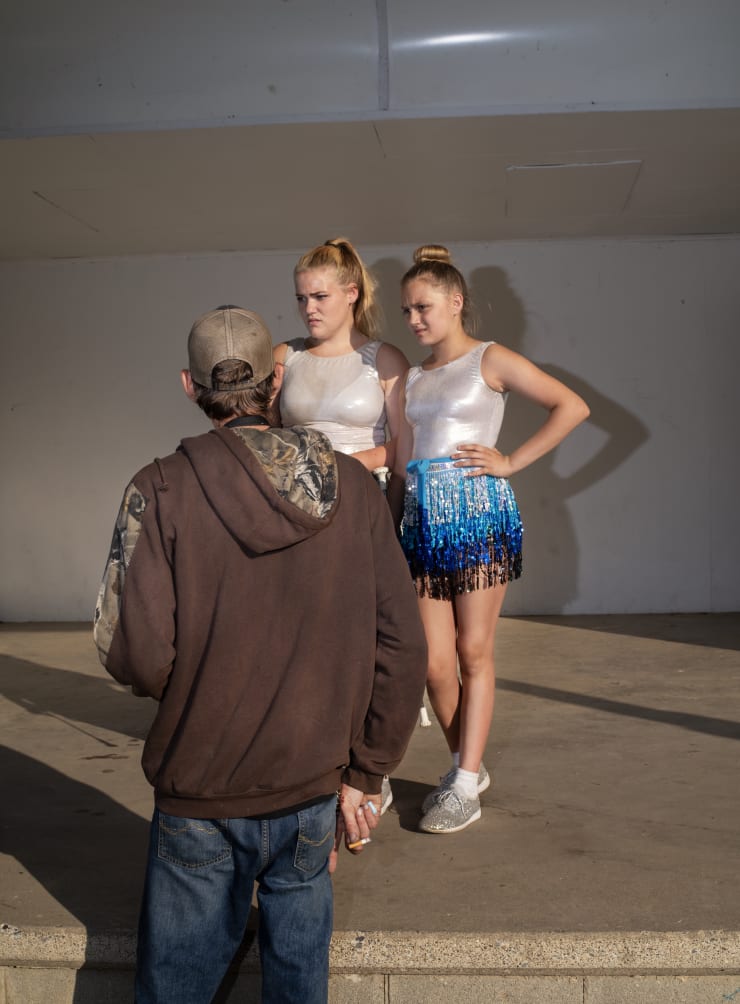-
Farah Al Qasimi
Toy world
-
The Third Line is pleased to announce Toy World, our fourth solo exhibition with Farah Al Qasimi. The exhibition debuts a collection of still and moving images in black and white and color.
-
Toy World
Sarah Chekfa -
 Farah Al Qasimi, Dune, n.d., Archival Inkjet Print, 50.8 x 68.58 cm, Edition of 5, 2AP
Farah Al Qasimi, Dune, n.d., Archival Inkjet Print, 50.8 x 68.58 cm, Edition of 5, 2AP -
-

Farah Al Qasimi, Tumbling Woman, 2024, Video Installation, 1m30s, Edition 1 of 3, 1AP
-
-
 Farah Al Qasimi, Man and Horse, n.d., Archival Inkjet Print, 50.8 x 68.58 cm, Edition of 5, 2AP
Farah Al Qasimi, Man and Horse, n.d., Archival Inkjet Print, 50.8 x 68.58 cm, Edition of 5, 2AP -
-
 Farah Al Qasimi, Flies on Camel, n.d., Archival Inkjet Print, 50.8 x 35.56 cm, Edition of 5, 2AP
Farah Al Qasimi, Flies on Camel, n.d., Archival Inkjet Print, 50.8 x 35.56 cm, Edition of 5, 2AP -
-
 Farah Al Qasimi, Security Camera, Yara, Pigeons on Pink Building, 2024, Archival Inkjet Print, 127 x 220.98 cm, Edition 1 of 5, 2AP
Farah Al Qasimi, Security Camera, Yara, Pigeons on Pink Building, 2024, Archival Inkjet Print, 127 x 220.98 cm, Edition 1 of 5, 2AP -
-
 Farah Al Qasimi, Jarash, n.d.,Archival Inkjet Print, 50.8 x 68.58 cm, Edition of 5, 2AP
Farah Al Qasimi, Jarash, n.d.,Archival Inkjet Print, 50.8 x 68.58 cm, Edition of 5, 2AP -
-
 Farah Al Qasimi, Machboos 2024, Archival Inkjet Print, 114.3 x 152.4 cm, Edition of 5, 2AP
Farah Al Qasimi, Machboos 2024, Archival Inkjet Print, 114.3 x 152.4 cm, Edition of 5, 2AP -
-
-
 Farah Al QasimiHorse Bucking Teeth, n.d.Archival Inkjet Print50.8 x 68.58 cmEdition of 5, 2AP
Farah Al QasimiHorse Bucking Teeth, n.d.Archival Inkjet Print50.8 x 68.58 cmEdition of 5, 2AP -
 Farah Al QasimiJarash, n.d.Archival Inkjet Print50.8 x 68.58 cmEdition of 5, 2AP
Farah Al QasimiJarash, n.d.Archival Inkjet Print50.8 x 68.58 cmEdition of 5, 2AP -
 Farah Al QasimiHouse Under Construction, n.d.Archival Inkjet Print50.8 x 68.58 cmEdition of 5, 2AP
Farah Al QasimiHouse Under Construction, n.d.Archival Inkjet Print50.8 x 68.58 cmEdition of 5, 2AP -
 Farah Al QasimiMan and Horse, n.d.Archival Inkjet Print50.8 x 68.58 cmEdition of 5, 2AP
Farah Al QasimiMan and Horse, n.d.Archival Inkjet Print50.8 x 68.58 cmEdition of 5, 2AP -
 Farah Al QasimiPatriotic Sponsor Bell Helicopters, n.d.Archival Inkjet Print50.8 x 68.58 cmEdition of 5, 2AP
Farah Al QasimiPatriotic Sponsor Bell Helicopters, n.d.Archival Inkjet Print50.8 x 68.58 cmEdition of 5, 2AP -
 Farah Al QasimiKhooshboo, n.d.Archival Inkjet Print50.8 x 68.58 cmEdition of 5, 2AP
Farah Al QasimiKhooshboo, n.d.Archival Inkjet Print50.8 x 68.58 cmEdition of 5, 2AP -
 Farah Al QasimiFlies on Camel, n.d.Archival Inkjet Print50.8 x 35.56 cmEdition of 5, 2AP
Farah Al QasimiFlies on Camel, n.d.Archival Inkjet Print50.8 x 35.56 cmEdition of 5, 2AP -
 Farah Al QasimiDune, n.d.Archival Inkjet Print50.8 x 68.58 cmEdition of 5, 2AP
Farah Al QasimiDune, n.d.Archival Inkjet Print50.8 x 68.58 cmEdition of 5, 2AP -
 Farah Al QasimiCamel Bones, n.d.Archival Inkjet Print50.8 x 68.58 cmEdition of 5, 2AP
Farah Al QasimiCamel Bones, n.d.Archival Inkjet Print50.8 x 68.58 cmEdition of 5, 2AP -
 Farah Al QasimiBurning Palm, n.d.Archival Inkjet Print50.8 x 35.56 cmEdition of 5, 2AP
Farah Al QasimiBurning Palm, n.d.Archival Inkjet Print50.8 x 35.56 cmEdition of 5, 2AP -
 Farah Al QasimiYoung Marine, n.d.Archival Inkjet Print50.8 x 35.56 cmEdition of 5, 2AP
Farah Al QasimiYoung Marine, n.d.Archival Inkjet Print50.8 x 35.56 cmEdition of 5, 2AP -
 Farah Al QasimiTerrorist Hunting Permit , n.d.Archival Inkjet Print50.8 x 68.58 cmEdition of 5, 2AP
Farah Al QasimiTerrorist Hunting Permit , n.d.Archival Inkjet Print50.8 x 68.58 cmEdition of 5, 2AP -
 Farah Al QasimiSecurity Camera, Yara, Pigeons on Pink Building, 2024Archival Inkjet Print127 x 220.98 cmEdition 1 of 5, 2AP
Farah Al QasimiSecurity Camera, Yara, Pigeons on Pink Building, 2024Archival Inkjet Print127 x 220.98 cmEdition 1 of 5, 2AP -
 Farah Al QasimiWingspan, 2024Mixed Media127 x 175.26 cm
Farah Al QasimiWingspan, 2024Mixed Media127 x 175.26 cm -
 Farah Al QasimiHamed 2023, 2023Archival Inkjet Print101.6 x 76.2 cmEdition of 5, 2AP
Farah Al QasimiHamed 2023, 2023Archival Inkjet Print101.6 x 76.2 cmEdition of 5, 2AP -
 Farah Al QasimiMachboos, 2024Archival Inkjet Print114.3 x 152.4 cmEdition of 5, 2AP
Farah Al QasimiMachboos, 2024Archival Inkjet Print114.3 x 152.4 cmEdition of 5, 2AP -
 Farah Al QasimiCrane Accident, 2017Archival Inkjet Print101.6 x 76.2 cmEdition of 5, 2AP
Farah Al QasimiCrane Accident, 2017Archival Inkjet Print101.6 x 76.2 cmEdition of 5, 2AP -
 Farah Al QasimiSand Dune , 2023Archival Inkjet Print127 x 76.2 cmEdition of 5, 2AP
Farah Al QasimiSand Dune , 2023Archival Inkjet Print127 x 76.2 cmEdition of 5, 2AP -
 Farah Al QasimiBaton Girls, 2019Archival Inkjet Print50.8 x 35.56 cmEdition of 5, 2AP
Farah Al QasimiBaton Girls, 2019Archival Inkjet Print50.8 x 35.56 cmEdition of 5, 2AP
-
-
About Farah Al Qasimi
Farah Al Qasimi (b. 1991, Abu Dhabi, United Arab Emirates; lives and works in Brooklyn, NY) makes photographs, films and music. Often working with large-scale vinyl imagery and a multiplicity of photographic prints and screens, Farah is interested in the internet and its hierarchies of information and emotion. Farah also loves the complexity of storytelling and value-building in children's cartoons, and many of her video works include primary narrators who are anthropomorphized. She has a highly collaborative practice and has worked with hand-sewn puppets, falcons, African Land Snails, exorcists, and most recently, a Jack Sparrow impersonator.
Selected solo exhibitions include; Abort, Retry, Fail, Delfina Foundation, London, UK (2023); The Swarm, Plug in Institute of Contemporary Art, Winnipeg, Canada (2023); Poltergeist, C/O Berlin, Germany (2023); Star Machine, Art Gallery of Western Australia, Perth, Australia (2023); General Behaviour, Cultural Foundation, Abu Dhabi, UAE (2022); Surge, François Ghebaly, Los Angeles, USA (2022); Everywhere there is splendor, Contemporary Art Museum St. Louis, USA (2021); Funhouse, Helena Anrather Gallery, NY, USA (2020); Back and Forth Disco, Public Art Fund, New York, NY, USA (2020); Open Arm Sea, Houston Center for Photography, Houston, TX, USA (2020); Arrival, The Third Line, Dubai, UAE (2019); List Projects: Farah Al Qasimi,MIT List Visual Arts Center, Cambridge, MA, USA (2019); Artist's Rooms, Jameel Arts Centre, Dubai, UAE (2019); More Good News, Helena Anrather, New York (2017).
Farah’s work has been acquired by prominent collections including but not limited to: Museum of Modern Art, New York; Guggenheim Museum, New York; Guggenheim, Abu Dhabi; Centre Pompidou, Paris; San Francisco Museum of Modern Art (SFMOMA), San Francisco; Art Gallery of Western Australia, Perth; Los Angeles County Museum of Art (LACMA), California; Museum of Contemporary Art (MCA), Chicago; and Tate Modern, London.
-
About Sarah Chekfa
Sarah Chekfa lives and writes in New York City. Her work has appeared in Flash Art, Vogue, The New York Review of Architecture, Do Not Research, and The Drunken Canal, among other publications.
Farah Al Qasimi: Toy World
Past viewing_room
